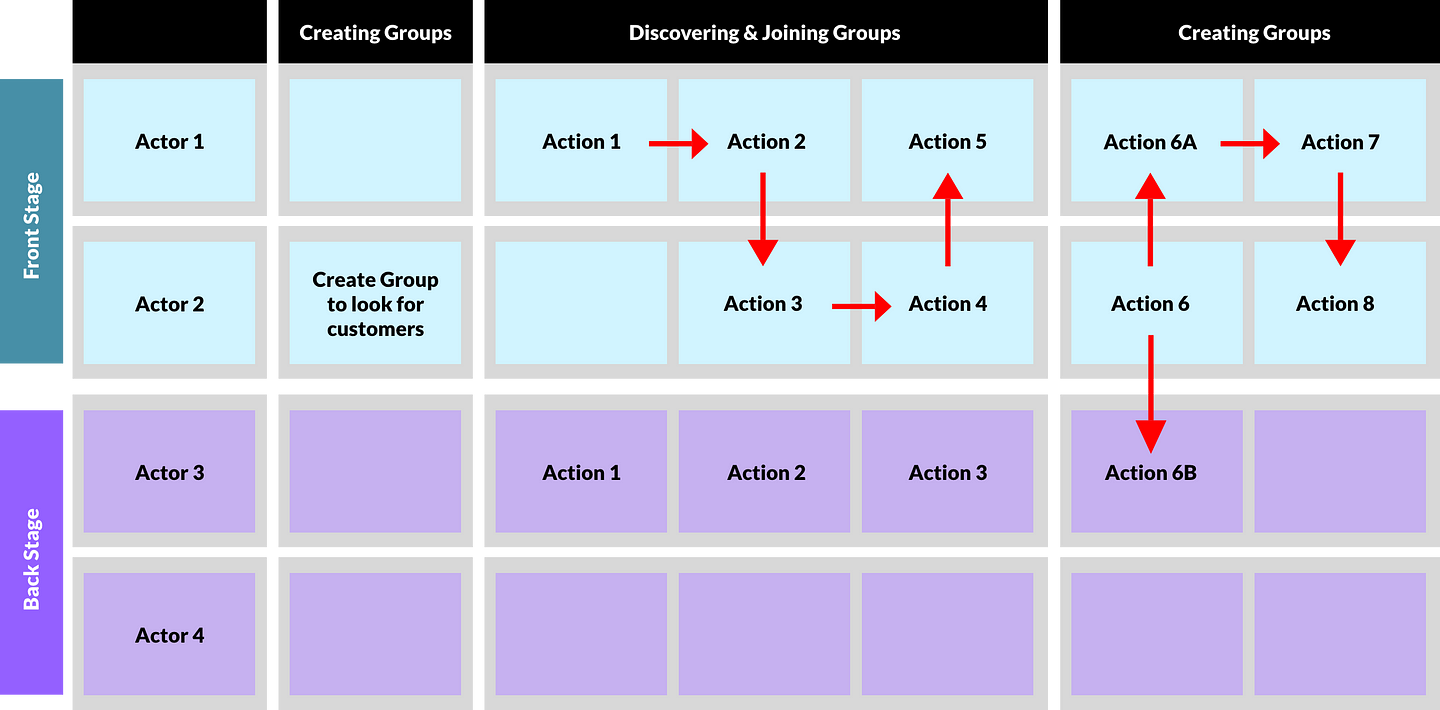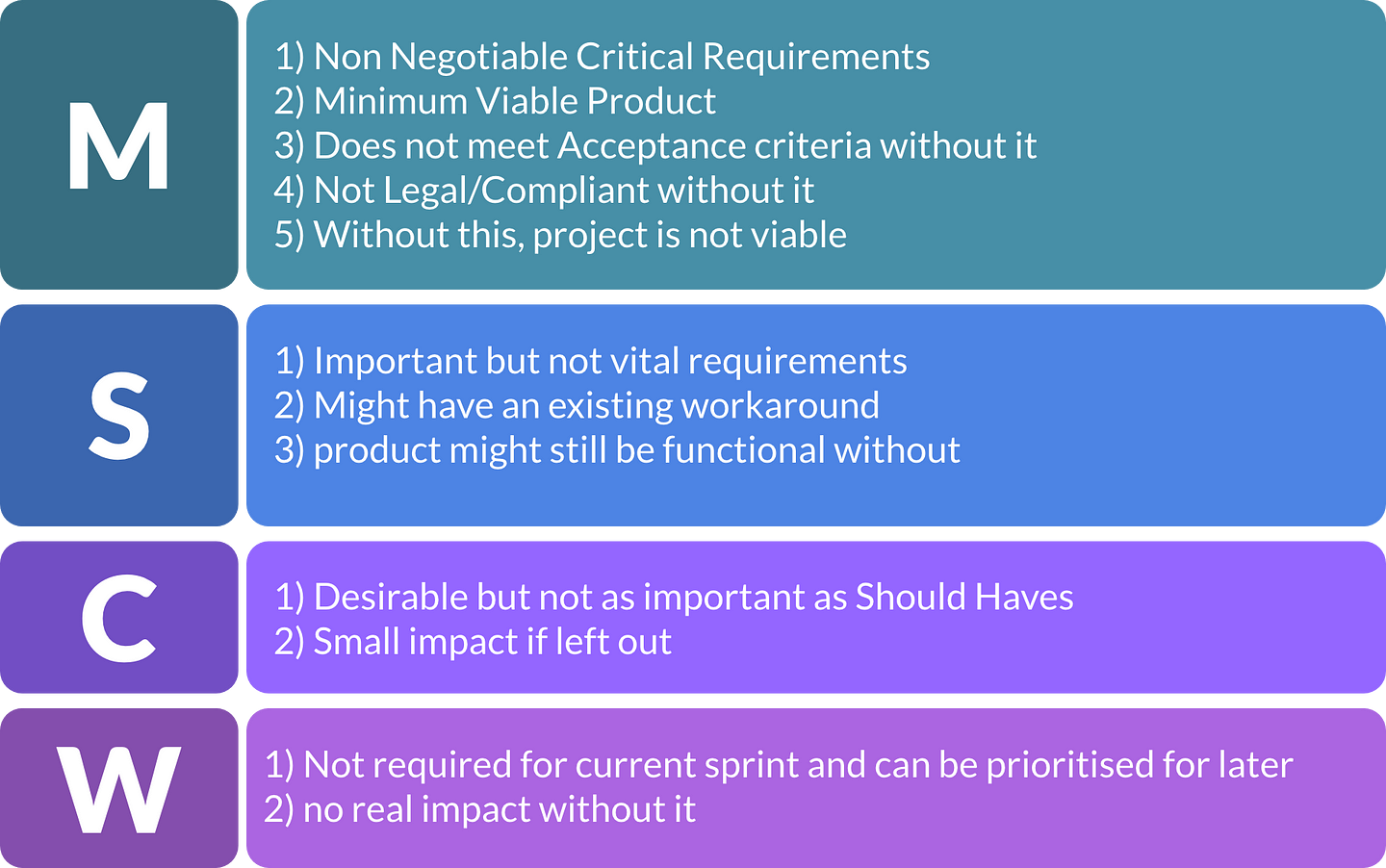Understanding the Lean Product Requirements Document (PRD)
As a project manager, wrangling with the complexities of a Product Requirements Document (PRD) is a common challenge. Traditional PRDs can be cumbersome, unclear, and hard to maintain, often causing team misalignment.
Enter the Lean Product Requirements Document (Lean PRD), a dynamic tool that:
evolves with your project
engages your team and stakeholders
ensures focus on the core product aspects
This streamlined solution not only addresses traditional PRD shortcomings but transforms them into a collaborative asset.
In this introduction, we provide a comprehensive overview of the Lean PRD, exploring its definition, purpose, and how it differs from traditional PRDs. We also delve into best practices for crafting a Lean PRD, emphasizing collaborative writing, feature prioritization, and continuous evolution. This guide sets the stage for future discussions on optimizing your product development process.
1. Benefits of Using a Lean PRD
At its heart, a Lean Product Requirements Document (Lean PRD) is a strategic tool that bridges the gap between an idea and its realization. Let’s break down what this means for you and your team.
Use WHY to Help Define Product Goals & Clarify its Purpose:
The first step in a Lean PRD is crystal clear: state the goal. This isn’t just about listing features; it’s about capturing the essence of what the product is intended to achieve. Whether it’s solving a specific problem, fulfilling a need, or seizing a market opportunity, the goal should be a guiding star for the entire project.
Here are some tools you can use to help you define the goals of your project
Use WHO to define the User Personas and Identify the User Needs:
Knowing your audience is key. A Lean PRD hones in on user personas, detailing who will use the product and why. This user-centric approach ensures that every feature and decision aligns with the real needs and expectations of your end users. Here’s a guide we’ve found to be very useful.
Use WHAT to define What the Core Functionalities of the Product Features Will Be
This is where the Lean PRD diverges from traditional PRDs. Instead of an exhaustive feature list, you focus on outlining the core functionalities and key features that will meet the goals and satisfy the user personas. This clarity helps in maintaining focus throughout the development process.
A Lean PRD stands apart from traditional PRDs in its approach and execution. Where traditional PRDs can be rigid and exhaustive, the Lean PRD is agile, focused, and adaptable. It’s a living document that evolves with your project, ensuring that changes in market trends, user feedback, and other variables are incorporated seamlessly into your planning.
The benefits of a Lean PRD in product development are numerous:
Reduces complexity, making the document more accessible and useful for the team.
Encourages collaboration and feedback, vital in agile environments.
Ensures that the team stays focused on what matters most — delivering a product that meets user needs and achieves its intended goals.
💡 Tip: Avoid Overloading with Details
Find the Balance Between Being Concise and Descriptive
One of the most common traps is turning the Lean PRD into an overly detailed and cumbersome document. While thoroughness is important, remember that excessive details can make the document less usable.
Strive for a balance where the PRD provides enough information to be clear and actionable, but not so much that it becomes overwhelming or difficult to navigate.
2. Tools & Tips to Help Define the Goal of The Product
When crafting a Lean Product Requirements Document (Lean PRD), defining what the product will be is crucial. Here are some essential tools and approaches that help in shaping a clear and effective product vision.
Use A Service Blueprint
This tool is invaluable for visualizing how users interact with your product to derive value. A service blueprint lays out the entire user journey, capturing interactions from start to finish. It’s not just about the user interface; it also includes backend processes, touchpoints, and pain points.
The benefit of using a service blueprint is multifold:
aligns team members on the broader context of the product
ensures that everyone understands the user journey and the interactions involved
This shared understanding is key to developing a product that delivers a cohesive and satisfying user experience.
Establish Core Happy Paths/Flows
Focusing on the core value delivered to the user, this component combines visual wireframes with user flow steps. By concentrating on the most unique and interesting aspects of the user’s journey, these flows help articulate how the product’s goals will be achieved.
This approach saves time and resources by sidestepping less critical aspects like “Edit User Profile,” which have a known complexity and can be addressed later.
The advantage here is two-fold:
helps the development team focus on the most impactful aspects of the user experience
provides a clear visual and functional understanding of what the product needs to achieve.
💡 Tip: Avoid Lack of Flexibility
Allowing Room for Adjustments
Another pitfall is treating the Lean PRD as an immutable plan. The agile approach thrives on flexibility and responsiveness to change. Your PRD should be a dynamic document that can evolve based on user feedback, technological advancements, and changing market conditions. Rigidity can stifle innovation and responsiveness, two critical aspects of successful agile projects.
Features and Priorities
A Lean PRD should include a well-structured list of features that are necessary for the product to function, categorized into ‘Must Have’, ‘Should Have’, ‘Could Have, and ‘Won’t Have’. Each feature should be accompanied by a concise description and a brief list of its functionalities.
This prioritization aids in focusing development efforts on what is absolutely essential for the initial phases of the product, ensuring that resources are allocated efficiently. It also helps in managing stakeholder expectations and aligns the development process with the overall product strategy.
By incorporating these components into your Lean PRD, you not only define the product in a clear and actionable way but also set a strategic course for development that is focused, efficient, and aligned with user needs.
💡 Tip: Don’t Ignore User Feedback
The Importance of Incorporating User Insights
Neglecting user feedback can lead to a product that fails to resonate with its intended audience. It’s crucial to incorporate feedback and insights from real users throughout the development process. This iterative approach ensures that the product remains user-centric and aligned with the needs and preferences of its target audience.
3. Best Practices When Creating a Lean Product Requirements Document
Creating an effective Lean PRD is as much an art as it is a science. Here are some best practices that ensure your Lean PRD is not just a document, but a catalyst for successful product development:
Collaborative Writing — Involving Key Stakeholders:
The creation of a Lean PRD should not be a solitary endeavor. Involve key stakeholders from different domains — be it engineering, design, marketing, or customer support. This collaboration ensures that the PRD is comprehensive and takes into account diverse perspectives. Utilize tools and platforms that allow for real-time collaboration and feedback, making the process dynamic and inclusive.Prioritizing Features — Focusing on What’s Most Important:
In a Lean PRD, every feature should justify its existence. Divide features into categories like ‘Must Have’, ‘Should Have’, ‘Could Have, and ‘Won’t Have’ as discussed in the previous section. This helps in concentrating efforts on what’s critical for the initial launch, ensuring efficient use of resources and time.Continuous Evolution — Updating the PRD as the Project Evolves:
The Lean PRD is not a static document; it’s a living guide that evolves with your project. Be open to revising and updating the PRD as new insights emerge, market dynamics shift, or user feedback is received. This flexibility is key in agile development, allowing your product to adapt and stay relevant.Keeping It Simple — Avoiding Unnecessary Jargon and Complexity:
A Lean PRD should be easily understandable to all team members, regardless of their expertise. Avoid technical jargon and overly complex explanations. The goal is to communicate clearly and succinctly, making the PRD a practical and user-friendly tool.
By adhering to these best practices, your Lean PRD becomes more than a mere document; it transforms into a strategic asset, driving clarity, focus, and alignment within your team. It’s a tool that not only guides the development process but also fosters a collaborative and adaptable work environment.
Conclusion
Embracing a Lean Product Requirements Document (Lean PRD) revolutionizes the way we approach product development in an agile setting. By ensuring that your PRD is collaborative, dynamic, and user-focused, it becomes more than just a document; it’s a strategic tool that guides every step of your project.
As you move forward, let the Lean PRD be the starting point for all your scrum meetings and feature breakdown discussions. It will help keep your team aligned, focused on user needs, and adaptable to change, setting the stage for a successful, well-executed product. Remember, a Lean PRD is not just a part of the agile process; it’s a catalyst for efficiency and innovation in your product development journey.
💡 Looking ahead!
Our series will continue to demystify the intricacies of effective product planning. Future articles will delve into the practical application of tools like Service Blueprints, Wireframes, and User Flows. These tools are essential for defining the “What” section of the Lean PRD, offering a clearer understanding and alignment within the team.
We’ll explore how to use these tools to detail the user experience, streamline communication, and ensure that every member of the team shares a unified vision for the product. This upcoming content is designed to equip you with the knowledge and skills to further refine your product development process, making it more efficient and aligned with your objectives.



